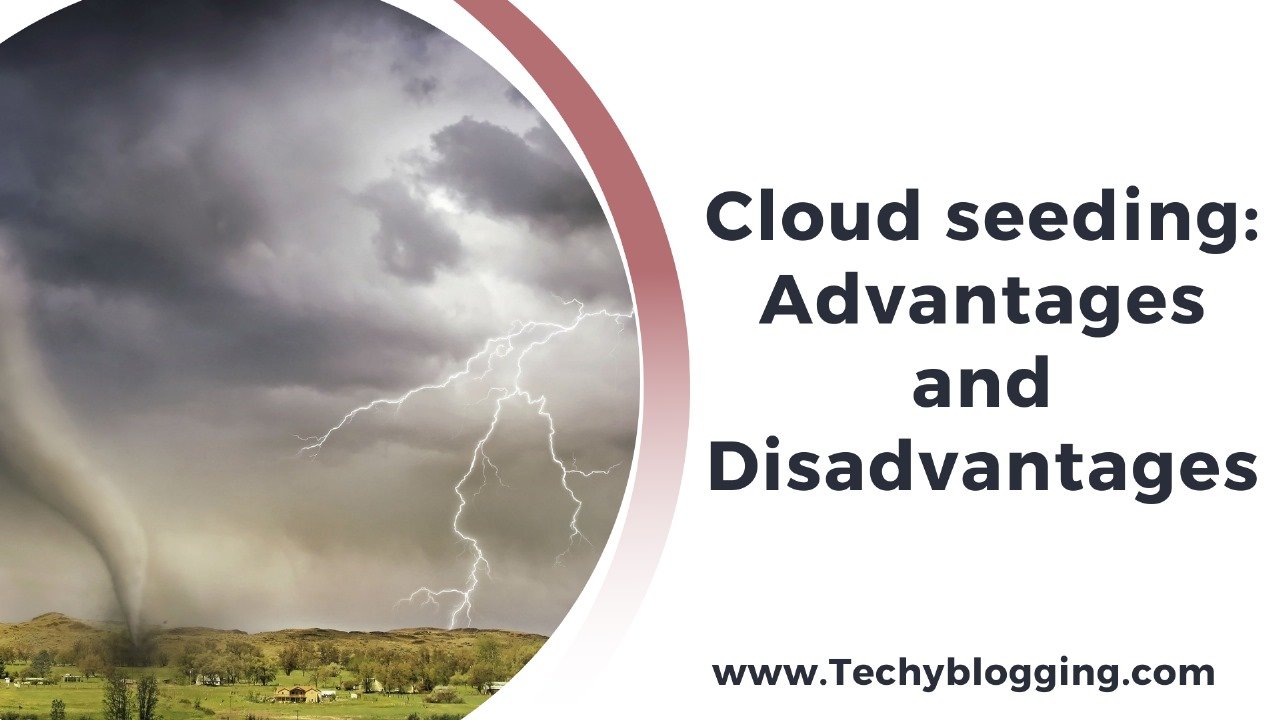Cloud seeding is a synthetic moderating of the weather that aims to rise precipitation levels and improve meteorological conditions. In the process of dispersing chemicals into the air that act as clouds, or as frozen nuclei, the practice has been gaining popularity in a variety of areas across the globe. Although the idea is fascinating however. It is crucial to look at both the advantages and drawbacks of cloud seeding in order to fully comprehend its significance.
What is Cloud Seeding?
Cloud seeding is the introduction of certain chemicals, including silver iodide or sodium chloride or carbon dioxide liquid in the air in order to stimulate precipitation. The process is carried out on the ground or by aircrafts that disperse the seeds into specific clouds. This is design to aid in the growth of raindrops, or crystals of ice, eventually which will result in more rain.
Historical Background
Cloud seeding’s origins date back to 1940, in the 1940s when researchers such as Vincent J. Schaefer and Irving Langmuir started experimenting in the field of cloud physics. The first cloud seeding research that was successful took place in 1946, within the Adirondack Mountains in New York. In the years since, technique has improved. Which led to the application of cloud seeding in different nations for the relief of drought, enhancement of snowpack and even hail control.
Advantages of Cloud Seeding

1. Increased Precipitation
One of the major benefits of seeding clouds is the capacity to rise rain. For areas in arid zones or that are experiencing drought, it can deliver the water needed to drink, agriculture as well as other important purposes. Research has shown that the seeding of clouds can increase the amount of precipitation to 10% up to 30% under certain situations.
2. Agricultural Benefits
The farmers often have problems because of insufficient rain, that can impact crop yields. Cloud seeding could loated tea recipe to alleviate the problems through giving more moisture in critical growth times. This is not just beneficial for agriculture but it can be a stabilizing factor for local economies that depend heavily on agriculture.
3. Drought Mitigation
Cloud seeding is an choice to address dry conditions. Through artificially generating rain, it is able to refill aquifers and reservoirs, offering long-term benefits to people who depend on constant sources of water. This can be particularly important for areas that are experiencing prolonged dry periods.
4. Snowpack Enhancement
In areas with mountains Cloud seeding is commonly employed to boost the amount of snowfall. An improve in snowpack can loated tea recipe improve water sources in summer and spring seasons. Thereby benefitting both the environment and our need for water. An increased snowpack will result in better irrigation systems. That can supply water to generate hydroelectric power as well as irrigation.
5. Reduced Hail Damage
A few cloud seeding programs seek to decrease the formation of hail. That can cause damage for crops as well as property. With the modification of cloud processes it is capable of reducing the size of hail and its frequency which can protect investments in agriculture and the infrastructure.
Disadvantages of Cloud Seeding
1. Environmental Concerns
One of the main issues with cloud seeding is the possible environmental impacts. The chemicals used to seed including silver iodide pose questions regarding their environmental effects over the long term on ecosystems. In the event of their accumulation within the soil or water sources can have unintended impacts on animal and plant well-being.
2. Weather Manipulation Ethics
The ethical consequences of altering the weather pattern cannot be ignored. Cloud seeding poses questions regarding the ethicality of altering the natural system of weather. In the case of one area successfully causes rain, it might hinder neighboring regions from receiving precipitation which could lead to disputes over the availability of water.
3. Cost and Effectiveness
Implementing cloud seeding strategies are costly, usually needing significant investments in aircrafts, technologies, and staff. Furthermore, the efficacy of cloud seeding can’t be guaranteed since it relies on the specific conditions of the atmosphere. The critics say that the money that are allocated to cloud seeding may be better invested in more sustainable methods of water management, or on conservation initiatives.
4. Limited Scope
Cloud seeding isn’t an all-purpose solution. Its efficiency varies adequate to geographic location, weather conditions, as well as the type of cloud being focused on. Some clouds might not be suited for seeding, thus limiting the effectiveness of this technique overall.
5. Lack of Comprehensive Research
Cloud seeding has been used for decades, extensive research regarding its long-term effects is not yet available. Most studies focus on the short-term, and fail to adequately consider the wider implications of changing the natural pattern of precipitation. The lack of knowledge could hinder the ability of policymakers to make informed decisions.
The Future of Cloud Seeding
Advances in Technology
As technology advances continue to advance and meteorological sciences The potential of Cloud seeding in order to rise the weather could rise. Advanced modeling methods and technologies for remote sensing will loated tea recipe determine those most appropriate conditions to seed effectively and could increase its effectiveness overall.
Climate Change Considerations
In the future, as climate change continues to impact weather patterns around the world Cloud seeding is likely to be a crucial tool in controlling water availability and extreme weather conditions. But, the role of cloud seeding must be considered in a wider context of sustainability-based environmentally sustainable methods.
Regulatory Frameworks
A clear framework of regulation for practices for cloud seeding is essential. Regulations can warrant that ethical concerns are taken into consideration and warrant that the environmental impact is monitored and minimized. Collaboration with international partners is required to deal with cross-border issues definitely.
Conclusion
Cloud seeding offers both substantial advantages as well as significant drawbacks. It is a possible method of increasing rainfall and helping to meet agricultural demands however, ethical, environmental as well as economic considerations must be considered. With the advancement of technology and as the climate issues become more prominent cloud seeding might be a factor in the future plans for weather-related management. But careful thought and extensive research will be essential in order to warrant that its advantages outweigh risk, ultimately resulting in the sustainable management of water resources.




